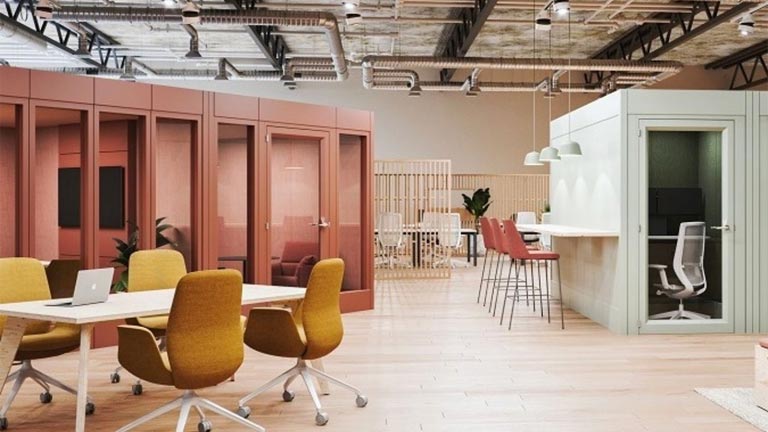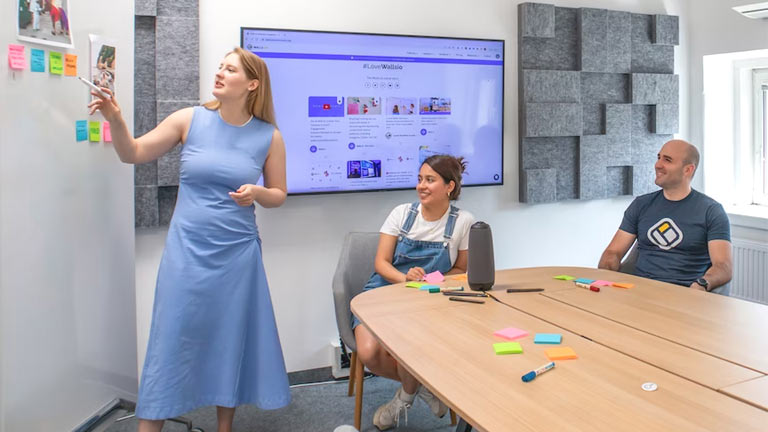
In modern workplaces, the significance of office design extends far beyond aesthetics and functionality. The psychology of office design has emerged as a crucial consideration, with growing recognition of how office fit-outs can profoundly influence employee well-being, productivity, and overall job satisfaction. This article explores the psychological aspects of office design and its profound impact on employees’ well-being.
Creating a Sense of Belonging
An office is more than just a physical space; employees spend a significant portion of their waking hours. A well-designed office can foster a sense of belonging and identity among employees. This sense of belonging can significantly impact their well-being by reducing feelings of isolation and enhancing social connections within the workplace. Open, collaborative spaces, communal areas, and shared amenities can contribute to this sense of belonging.
Enhancing Productivity and Focus
The layout and design of an office can either facilitate or hinder productivity and focus. For instance, an open-plan office with ample natural light and ergonomic furniture can boost productivity by creating a comfortable and inspiring work environment. On the other hand, overcrowded workspaces, excessive noise, and distractions can lead to reduced concentration and increased stress levels. A well-thought-out office design aims to minimise distractions, support focused work, and enhance employee well-being by reducing stress.
Promoting Physical Health
Employee well-being isn’t limited to mental health; physical health is also crucial. Office design promotes physical health through sit-stand desks, ergonomic chairs, proper lighting, and accessible staircases. Encouraging physical activity and providing opportunities for movement throughout the workday can reduce the risk of sedentary-related health issues and contribute to overall well-being.
Reducing Stress and Anxiety
Office environments can be a source of stress and anxiety for many employees. Factors such as cramped spaces, lack of privacy, and poor ventilation can exacerbate these feelings. Conversely, well-designed offices incorporate greenery, natural light, and calming colour schemes that can help reduce stress and anxiety. Quiet zones, meditation rooms, or relaxation spaces can provide employees with a much-needed respite from the demands of their work.
Encouraging Autonomy and Flexibility
Employees value autonomy and flexibility in their work, and office design can support these needs. Providing employees with options for where and how they work, whether in quiet spaces, collaborative zones, or remote work areas, can empower them to take control of their workday. This flexibility can increase job satisfaction and a greater sense of well-being.
Fostering Creativity and Innovation
Creativity is valuable in many workplaces; office design can foster or stifle it. Collaborative spaces, brainstorming areas, and breakout rooms can encourage employees to think beyond the box and collaborate on innovative projects. An office that supports creativity can lead to a more fulfilling work experience and a sense of accomplishment, positively impacting well-being.
Supporting Work-Life Balance
The lines separating work and personal life have become progressively more unclear in today’s interconnected world. Office design can promote a healthy work-life balance. Features like flexible working hours, remote work options, and on-site amenities (such as gyms or childcare facilities) can help employees manage their responsibilities at work and home. A balanced work-life equilibrium contributes significantly to overall well-being.
Conclusion
The psychology of office design is a multifaceted discipline that recognises the profound impact of physical workspace on employee well-being. From creating a sense of belonging and promoting productivity to reducing stress and supporting work-life balance, office fitouts can enhance the quality of employees’ professional lives. In an era where the workforce’s well-being is paramount, businesses increasingly recognise the importance of thoughtful fit-outs, prioritising their employees’ mental and physical health.




